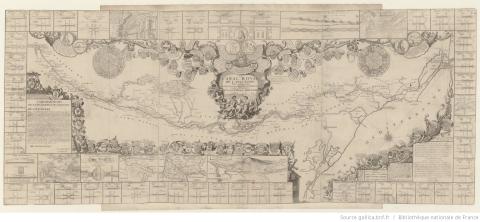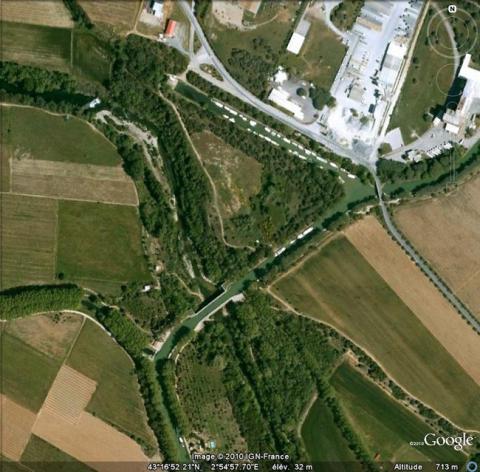Mirepeysset
History and description
The site of Mirepeysset (or Mirepeďsset) is linked to the canal du Midi, just like that of Cammazes covered in the file of the same name. It is linked to one of the difficult aspects of this construction: crossing the Cesse river, encased in a hollow of land in comparison to the level of water in the canal. When he completed the canal du Midi in 1667-1681, Riquet had intended to construct an aqueduct but due to lack of funding, he limited himself to blocking the Cesse by causing its level to rise to that of the canal, to facilitate its passage. The set-up rapidly proved insufficient, however, and the flooding caused severe damage to the barrage de Niquet, while the bed of the canal became silted up. Moreover, according to sources, similar problems seem to have also occurred elsewhere.In response, in 1687, Vauban outlined a project involving the construction of sixty canal-bridges and/or aqueducts. However, only forty-nine were completed, since the engineer Niquet, who was tasked with monitoring overall construction, modified the plans. That of Mirepeysset, constructed from 1689 to 1690, was a canal-bridge featuring archways which were sixty-four metres long. It traversed the Cesse river at a height of twenty metres (that of the level of the water of the canal, compared to that of the river). To solve the problem of flooding of the Cesse, a channel was carved out upstream to divert the surplus water. Mirepeysset also saw the implementation of the epanchoir des Patiasses, which diverted the overflow of the water from the canal du Midi into the Cesse downstream of the bridge. This latter work was completed in 1694. The projects of Vauban did not stop there. An access canal would also be excavated to link the canal du Midi to Narbonne. The work here, in fact, basically involved completing what Niquet had intended to do but failed. However, started in 1688, this latter work was abandoned in 1691, during the war of the League of Augsbourg. It was not until 1774 that construction recommenced, to be completed five years later.
Current state
The canal du Midi and its modifications (channel and épanchoir) still remain and are maintained by the Voies Navigables de France (French Waterways). Classed as historical monuments and included on the World Heritage List, the place can be freely visited.
Mirepeysset
Mirepeysset
43° 16' 52" N, 2° 54' 57" E
Type
canal-bridge and epanchoir
Engineers
Pierre-Paul Riquet, Sébastien le Prestre de Vauban, Antoine Niquet
Department
Hérault
Region
Occitanie
Bibliography
- ADGE (M.), « Vauban et le Canal du Languedoc » in Vauban et ses successeurs dans les Pyrénées, Paris, 2003, p.179-208.
- COTTE (M.), Le canal du Midi, « merveille de l’Europe », Paris, 1998.
- Direction territoriale du Sud-Ouest, Voies Navigables de France, www.sudouest.vnf.fr
- FAUCHERRE (N.) et RIBIERE (H.), La route des fortifications en Méditerranée, Paris, 2007.
- LARGUIER (G.), « Le Canal du Languedoc en Roussillon. Projets et débuts de réalisation, XVIIe-XVIIIe siècle » in Découvrir l’histoire du Roussillon XIIe-XXe siècle, Perpignan, 2010, p.365-377.
- Ouvrage collectif, Un canal…des canaux…, Paris, 1986, (catalogue d’exposition).
- PINON (P.), Canaux, rivières des hommes, Paris, 1995.
- PINON (P.), « Les canaux de navigation et l’aqueduc de Maintenon » in Vauban, Bâtisseur du Roi-Soleil, Paris, 2007, p.207-213.
- VIROL (M.), Vauban et les voies d’eau, Paris, 2007.

